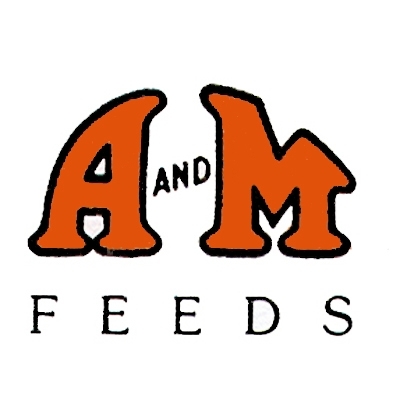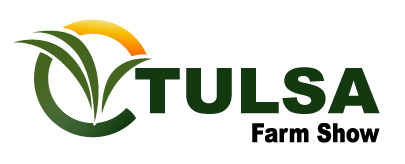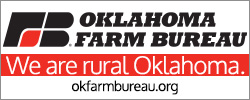|
Support Our Sponsors!

|
We invite you to listen to us on
great radio stations across the region on the Radio Oklahoma Network
weekdays- if you missed this morning's Farm News - or you are in an
area where you can't hear it- click here for this
morning's Farm news from Ron Hays on RON.
Let's
Check the Markets!
mornings with cash and futures reviewed- includes where
the Cash Cattle market stands, the latest Feeder Cattle Markets Etc.
Each afternoon we are posting a recap of that day's
markets as analyzed by Justin
Lewis of KIS futures- click
or tap here for the report posted yesterday afternoon around 3:30
PM.
Our
Oklahoma Farm Report Team!!!!
Ron Hays,
Senior Farm Director and Editor
Carson Horn,
Associate Farm Director and Editor
Pam Arterburn,
Calendar and Template Manager
Dave Lanning,
Markets and Production
Macey Mueller,
E-mail and Web Writer
|
|
|
Oklahoma's Latest Farm and Ranch News
Presented by

Your Update from Ron Hays of RON
Wednesday, August 10, 2016
|
|
Howdy Neighbors!
Here is your daily Oklahoma farm and ranch news
update.
|
|
 Featured
Story: Featured
Story:
US Beef and Pork Export Volumes Higher in First
Half of 2016- But Values Under that of First Half 2015
U.S.
red meat exports ended the first half of 2016 on a positive note, as
June export values for both pork and beef were the highest of the
year. June also marked the second consecutive month of solid
year-over-year volume growth, according to statistics released by
USDA and compiled by the U.S. Meat Export Federation (USMEF).
June beef export volume increased 2 percent from a year ago to 98,920
mt, while export value was $545.4 million, down 5 percent. First-half
export volume was up 3 percent to 541,547 mt, while value fell 10
percent to $2.91 billion.
Exports accounted for 13 percent of total beef production in June and
10 percent for muscle cuts only - each down about 1 percentage point
from a year ago. For January through June, these ratios were also 13
percent and 10 percent, respectively, steady with last year. Export
value per head of fed slaughter was $250 in June and $249.67 for the
first half - each down 14 percent from a year ago.
Pork exports reached 187,939 metric tons (mt) in June, up 8 percent
from a year ago, while export value increased 11 percent to $505.4
million. For the first half of the year, pork export volume was up 2
percent to 1.1 million mt, but value was down 4 percent to $2.77
billion.
|
|
Sponsor Spotlight
Oklahoma
AgCredit serves rural Oklahoma communities
and agriculture with loans and financial services. Providing loans
for rural property, farm and ranch land, country homes, livestock,
equipment and operating costs is all we do.
We are the state's
largest agricultural lending cooperative, serving 60 Oklahoma
Counties. To learn more about Oklahoma AgCredit, click here for our
website or call 866-245-3633.
|
 How
Will VFD Affect You? Five Things For Which Producers Will Be
Responsible How
Will VFD Affect You? Five Things For Which Producers Will Be
Responsible
As January 1, 2017 approaches - the date the
Veterinary Feed Directive (VFD) officially goes into effect - Dr. Kathy Simmons of
the National Cattlemen's Beef Association, is optimistic that all
those involved and impacted by the rule will experience a smooth
transition as they make necessary preparations on their respective
ends.
"We hope we're going to have a smooth transition, we always hope
that," Simmons said. "I think everybody who's involved has
been working towards that end point. I think veterinarians have
been... working to make sure that everybody understands, how you
complete a VFD."
Dr. Simmons says veterinarians, producers and feed distributors
alike, are currently educating themselves on the VFD drugs that are
available right now, how they plan to use them in the future for
their herd and how products will best be transitioned in the wake of
new labelling changes.
For producers, Dr. Simmons says the most important thing to do now in
preparation of VFD's January 1 date, is to establish a VCPR, or
veterinarian-client-patient relationship. This will help the
transition immensely if done prior to the start of the new
year.
With this working relationship established, producers will be able to
focus on their responsibilities under VFD which include:
- Using products only per the VFD order as instructed (i.e. duration,
dosage, number of animals treated, etc.)
- Using VFDs within the expiration period of the order
- Having VFD orders available for FDA inspection and copying if
requested
Listen
to Dr. Simmons explain more about the upcoming transition to using
medically important antimicrobial drugs under VFD regulations during
the latest Beef Buzz.
|
 Strong Resistance in
Varieties Key to Staving Off Disease in Canola Crops Strong Resistance in
Varieties Key to Staving Off Disease in Canola Crops
Oklahoma canola farmers were fortunate in 2016 when it
came to disease problems, according to Dr. John Damicone of
Oklahoma State University. Dr. Damicone says that this past growing
season really saw only limited problems arise during the life of the
2016 crop. We talked with him at the recent Canola educational event
held in Lahoma.
"If you pick up a book on canola diseases, it's probably 200
pages long and has lots of problems that can happen in canola,"
Damicone said. "We've had Blackleg show up pretty much all over
the state. But I think our varieties are resistant enough where it's
not hurting us too badly."
Aside from Blackleg, which causes stem cankers, Dr. Damicone says
canola farmers should also look out for other diseases like
Sclerotinia, a very persistent soil born disease that causes
aggressive stem rot, killing the plants. He says this is a disease
farmers do not want to get in their crop. He encourages producers to
only plant canola in the same field once every three or four years to
keep Sclerotinia levels from building up.
If disease does break out in your crop, Damicone says there are good
fungicides readily available to combat the problem, however, he says
that would significantly add to production costs, ruining profit
margins. He says the best bet, is to sow strong, resilient canola
varieties that will keep diseases at bay.
|
 Backlog
of Chinese Corn to Influence Corn Prices and Supplies for a Decade Backlog
of Chinese Corn to Influence Corn Prices and Supplies for a Decade
The Rabobank folks have a new study they have just
released that is entitled "Lost in the Maize: China's Corn Rebalancing
Effort Is a Long and Winding Road." They
contend that it will take the Chinese years to move the huge
stockpile of corn they have built up in the central plan for
agriculture.
According to the study- "China has already
announced plans to end its costly corn stockpiling program, effective
as of the 2016/17 new crop. The government is striving to relieve
supply-demand imbalance and cut massive inventory by to reducing corn
acreage in non-core areas, impeding imports of substitutes and
stimulating domestic consumption. Rabobank expects China's corn
production to decline gradually in the coming years, while feed and
industry use are likely to increase steadily, at mid-single-digit
rates, driven by the country's urbanisation and economic recovery.
"Based on Rabobank's scenario analyses, the whole
de-inventory procedure could take more than a decade. However,
equally important this corn policy reforms have a strong impact on
the international trade well beyond the corn market. China's massive
feed grain imports, which account for 70% of the global traded sorghum
and 25% of barley, will significantly slow down, while domestic corn
price decline and local corn consumption rises."
Our farmers who grow milo saw really strong prices a
year or so back when it seemed like every bushel that was available
was being snapped up by the Chinese- it looks like this policy move
being made by the Chinese government has made another year
like that one very unlikely anytime soon.
|
|
Sponsor Spotlight
Oklahoma
Genetics is proud to represent the tremendous
wheat varieties that have been developed by the Wheat Improvement
Team at Oklahoma State University. Varieties like Iba,
Gallagher and now Bentley are the result of years of breeding
research designed to help wheat producers in the southern plains to
grow high yielding, high quality winter wheat.
To learn more
about each of the varieties OGI represents, click here for their website.
You will find a "Seed Source" with a list of where seed for
each variety can be purchased for the 2017 wheat planting season.
|
 Cut Grass Now to Cut Feed
Costs Later Cut Grass Now to Cut Feed
Costs Later
Dr. Glenn Selk,
Oklahoma State University Emeritus Extension Animal Scientist, offers
herd health advice as part of the weekly series known as the
"Cow Calf Corner" published electronically by Dr. Derrell Peel
and Dr. Selk. This week, Dr. Selk offers tips to cut your winter feed
costs by stockpiling bermudagrass in the summer.
Harvested forage costs are a large part of the production costs
associated with cow-calf enterprises. A 16 year-old OSU trial had the
objective to economically evaluate stockpiled bermudagrass. The
research found that this practice can reduce cow-wintering costs.
Forage accumulation during the late summer and fall is variable from
year to year depending on moisture, temperatures, date of first frost
and fertility.
The OSU research has found that 50 to 100 pounds per acre of actual
nitrogen fertilizer applied in the late summer has produced 1000 -
2000 pounds of forage per acre. In some ideal situations even more
forage has been produced.
Studies between 1997 and 2000 found stockpiled bermudagrass protein
concentrations were quite impressive, even after frost. In November,
the range of protein content of the standing forage was 13.1% to
15.2%. The protein held up in December and ranged from 12.5% to 14.7%
and declined to 10.9% to 11.6% in January.
To make best use of the stockpiled forage, supplementation with 2
pounds of 14% to 25% protein feed beginning in early December is
recommended.
Click
here for a list of recommendations for stockpiling
bermudagrass pastures for best results and reducing winter feed
bills.
|
Want
to Have the Latest Energy News Delivered to Your Inbox Daily?

Award winning
broadcast journalist Jerry
Bohnen has spent years learning and understanding how
to cover the energy business here in the southern plains- Click here to subscribe to
his daily update of top Energy News.
|
 Artificial Insemination
Can Add Rapid Genetic Change and Uniformity to Cattle Herds Artificial Insemination
Can Add Rapid Genetic Change and Uniformity to Cattle Herds
Turning out a bull is easier than using artificial insemination
(A-I), but is it better?
Not if you're counting the many benefits of A-I for beef cattle, says
field expert Lorna
Marshall of Select Sires.
"It allows you to improve the reproductive efficiency of your
cow herd, because we shorten your calving interval," Marshall
said, "we get more of those cows to calve in the first 21
days."
Marshall added that A-I can be used as a risk management tool to remove
some of the risk that you would find with unproven bulls.
A-I also allows producers to pick and choose genetics that tailor fit
their operation's marketing and feed environments.
Click
here to read more and to watch a video of Marshall explaining the
benefits of adding artificial insemination to your herd's breeding
program.
|
 Noble Foundation Hires
New Agricultural Economics Consultant Noble Foundation Hires
New Agricultural Economics Consultant
The Samuel Roberts Noble Foundation has selected Myriah Johnson as
a new agricultural economics consultant in the Agricultural Division.
As an agricultural economics consultant, Johnson will assist
agricultural producers and land stewards by providing education and
insight on the numerous financial decisions in agriculture.
"Production agriculture in Oklahoma and Texas is close to my
heart, and I'm excited to assist farmers, ranchers and land managers
with their work," Johnson said. "The Noble Foundation
producer relations program provides the opportunity to work with
agricultural producers and help them harness the power of their data,
turning it into information that will improve their operations."
Johnson received her bachelor's degree in agricultural economics from
Oklahoma State University. She received her master's degree in
agricultural economics and doctoral degree in animal science from
Texas A&M University.
"We are pleased to have Myriah join the Noble Foundation
team," said Hugh Aljoe, Noble Foundation producer relations
manager. "Her economics expertise provides us with a skill set
that will have immediate benefit to the farmers and ranchers we
serve."
Johnson grew up in Perry, Oklahoma, on a wheat, stocker and cow-calf
operation.
Click
here for a link to more information about Johnson.
|
|
God Bless! You can reach us at the following:
|
|
Oklahoma Farm Bureau is Proud to be the
Presenting Sponsor of the Ron Hays Daily Farm and Ranch News Email
|
|
|
![]()



















